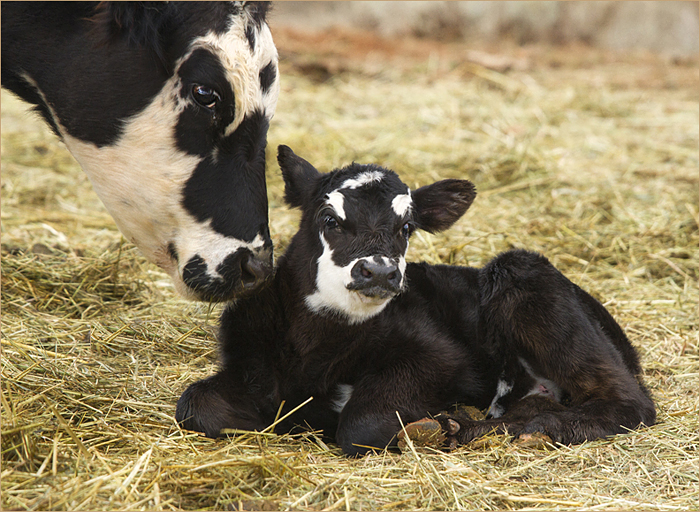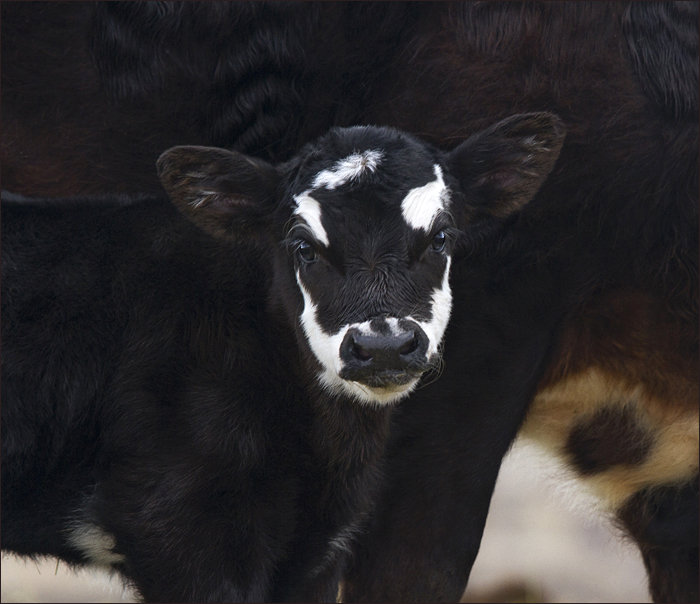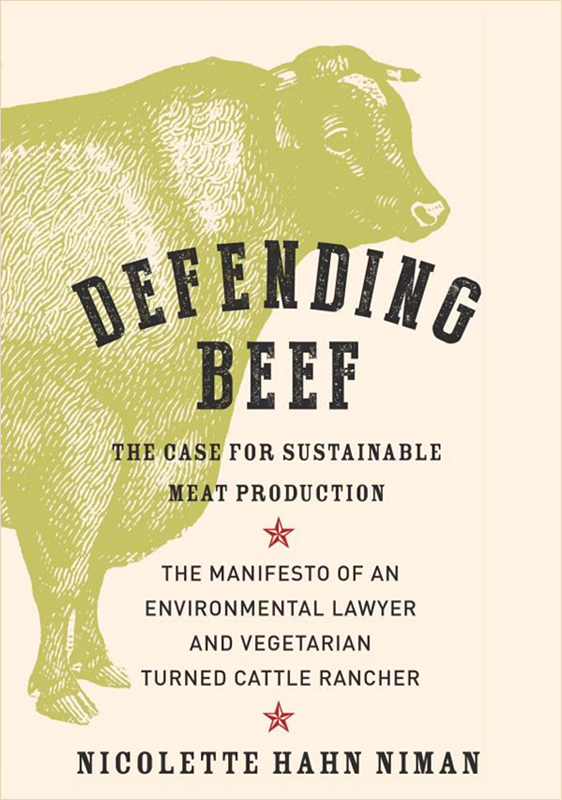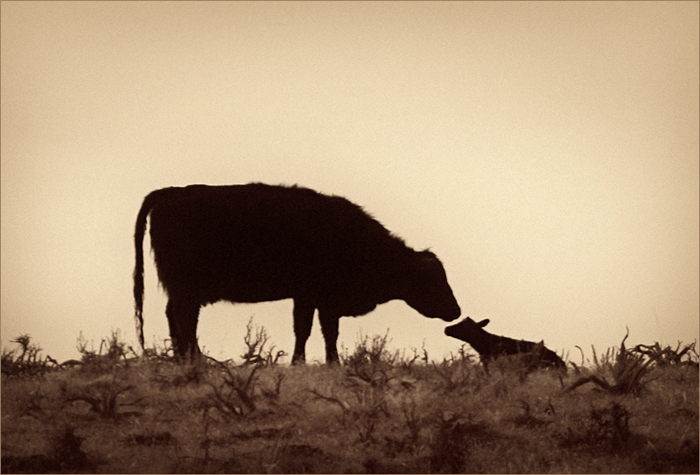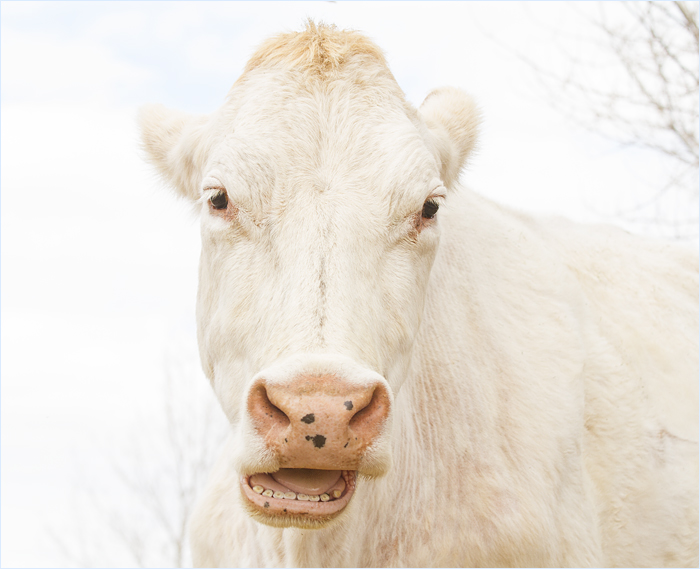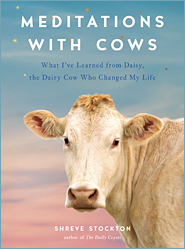Book Recap and Q&A
☆ May 8, 2018
I’ve been meaning to write this post for a while, for a long while – I’ve had scribbles of thoughts scattered about on scraps of paper and email replies to cut and paste, but haven’t managed to compile it all into an actual post. Part of this is because I’ve been in a cow vortex for the past two months, and part of it, I think, is because it will be closure. That chapter of my life and my reality is, for all intents and purposes, over already, and has been for months, but a little piece of me has still been kind of holding on because that space and time was so incredibly special. It’s time to let go….
The book dominated my year last year. January: the birth of the idea; February: planning the book; March: creating the video book trailer; April: launching the book; May, June, July, and August: immersed in photos photos photos and writing writing writing; September: pre-press and final tweaks; October: out of my hands but never off my mind during printing and bindery; November: prepping all my shipping supplies and biting my nails waiting for the books to be delivered to me; December: packaging books every waking moment of every day for three straight weeks and reading the loveliest, most heart-expanding messages from people as they received them.
I’ve gotten a lot of questions from people curious about the technical side of the project and who are interested in perhaps doing something similar. I love hearing the “behind-the-scenes” scoop from artists and indie businesses and am happy to share my experience – feel free to leave more Q’s in the comment section.
This project was more wonderful (full of wonder) than I ever dreamed and hoped. It was also so much harder than I ever imagined it would be. Everything took longer than I expected. I’ve done enough projects to know that everything always takes longer than you think it will and had factored in an extra time buffer of maybe 20%, and it STILL took longer! It was every-waking-moment-for-months kind of work, and I loved every second, even when I was miserable (because there were times I was miserable, times I had to mentally yell GET UP TRINITY GET UP! when I felt like I couldn’t keep going).
Things that helped me:
Meditation – First thing every single morning. I’ve lost my discipline in this area this year but want to get it back – it really did make such a difference.
La Yerberia – I’ve raved about La Yerberia before. Becki’s herbal support tailored to me, personally, allowed me to push myself reallllllly hard without too much pushback from my body. Her reishi adrenal tincture and Knotted Muscle balm were cherished daily treatments.
Ayla Nereo: The Code of The Flowers – I listened to this album on repeat repeat repeat.
Keto – I’m not going to go into great detail about the ketogenic diet on this post, but I’ve been keto the majority of the time since December 2016 and credit it with giving me epic stamina and mental balance during this project. For most of the summer, I naturally found myself shifting to one meal a day (which is very easy with keto) which freed up SO much time to work!
People – Helpful people showed up at the right place at the right time in my work and in life and it really felt like magic. The book wouldn’t have turned out as well as it did without them.
Why did you self-publish?
This was an interesting, full circle journey. Coffee table books are extremely expensive to produce compared with regular, text-based books – the paper, the binding, the size, the 4-color process all cost much more than a paperback filled with words printed in black ink. Because of the cost alone, I didn’t think a traditional publisher would be interested in this project. And from the beginning, I loved the idea of doing this myself, of having complete control over every aspect of the project. It was always a very personal project, large in scope, for me, yet incredibly intimate, and I wanted to be able to do it in a way that honored Charlie and myself and Charlie’s beloved fans, with no regard for what might be “commercially viable” or “normal” or have to deal with what other people told me I had to do or couldn’t do.
Early last year, I emailed my agent to tell her about my idea and to make sure it was OK for me to self-publish, per the contract I have with her. And it was (is), but she said she thought there’d be interest from a publisher and that she would love to shop it around if I wanted her to. So I said OK. I was curious, skeptical, and I haven’t given her a book in ten years so I felt a little wrong about keeping this one from her when she showed interest. I did tell her there was a time limit, because if I was going to launch the book myself, I wanted to do it for Charlie’s birthday and needed to start working on the trailer and other prep in March.
While she had it, I thought a lot about what kind of offer I would accept. What would it take to make me say yes? With a publisher, they would choose the title, the cover image, the paper, the page layout, the publication date, on and on and on. They also would take care of copy editing and distribution and do lots of wonderful things. I don’t have a problem with traditional publishing houses – my concerns were totally specific to this project. And I thought to myself, how much money would I have to be offered to be willing to relinquish these decisions? And I came up with a number. And then a few days later, I changed my mind. I knew, without question, that I wanted to do this myself and I simply couldn’t put a number on it – I didn’t want to trade the excitement and challenge and freedom and personal-ness of self-publishing for anything. I never regretted this decision during the process of creating and delivering the book. And the number I came up with, for which I was, for a moment, willing to sell the book? I ended up making exactly double that doing it myself. (And I was right about the publishers, too – they wanted another book from me, just not that book.)
How did you approach your search for a printer?
I’ve worked closely with a local, family-run print shop here in Wyoming for over ten years now – they do great work, and they’ve printed my archival photo prints, calendars, business cards, canvas prints, all of it. So I knew I wanted to work with them on the book.
When I approached them about the book, they told me they outsource bindery and do not have a printing press large enough to print the pages for hardback stitched bindery for a book of the size I wanted. With sewn bindery, twelve book pages are printed on a huge sheet of paper that is then folded and folded and folded and folded then sewn and trimmed. (Fun fact: that’s why my final page number for the book had to be divisible by 12! I learned so much during this process). These sheets of paper are huge, and therefore the printing press has to be HUGE.
My print shop wasn’t able to do the actual print work, but they acted as liaison with a much larger print shop in Cheyenne, to whom they regularly outsourced extra-large jobs. This was such a wonderful situation for me. I got to work with people I know and trust, and they coordinated the job with people they know and trust. My local shop did the pre-press work and we worked out a few glitches in the digital files before they sent the final digital files to Cheyenne, and then Cheyenne sent their pre-press proofs up here for the final OK from me.
This arrangement also allowed me to explain what I wanted in “artist language” to my printers (who know me) and they could translate that into “print industry lingo” to the pros in Cheyenne. Back in February or March, I brought a stack of art and photography books to my printer and said “I want this, I want this, I don’t want this, I want this,” showing examples from different books. And then they told me how to make that happen. Like all industries, the printing world has so much nuance and technique that you really don’t know unless you live in that world (which I don’t), so having an established, trusting, open relationship with my local shop helped make this book the best it could be. Working with strangers would have been a whole other ball of wax, and I think a lot of the little details would have been ignored or brushed over. There were a few key technical things that my guys brought up to me that I wouldn’t have even known to ask about, because they knew what I was going for and they cared.
For those who don’t have a relationship with a printer, there are tons of online self-publishing book printers these days. Many do art/photo books. I did scope out a few for pricing, just to compare – I was willing to pay more to do everything locally and on a press, but wanted to know the price difference. There definitely was a financial threshold that would have made me reconsider, but the price discrepancy didn’t reach that threshold. As for printing press versus digital – it’s not worth doing anything on a printing press if you’re printing less than 500 copies. The setup costs (plates, etc) are simply too high. So smaller print runs are done digitally. Digital prints are pretty great these days, but, in my opinion, they just do not compare to the beauty of work done on a printing press.
How did you handle design of the book?
I did everything myself in Photoshop, because that’s the only program I own and know how to use. My printers gave me a number of tips on what to do and how to do it, but I am comfortable enough with graphic design and layout so it’s not like they were teaching me from scratch. The text-based pages were more of a challenge, and if I ever self-publish a text-heavy book, I would definitely hire this out (along with a copy editor). Having never laid out large chunks of text for press before, I didn’t know I didn’t know how to do it!
How did you approach and consider content previously published on your blog?
This part was easy for me, and also hard – I knew I would use only new writing for this book, and would use any photos that were the best and most diverse, regardless of if/when they appeared on the blog. But, choosing photos took forever. 200 sounds like so many! But then you realize how many you have and each cut feels like Sophie’s choice… it was VERY time consuming and emotionally challenging for me.
How were you handling the pre-sales approach — especially if you hadn’t met your goal by press time?
I gave myself and The Public one month to reach my minimum order goal. I was not going to start work on the actual book until I met that goal. I reached that goal in 200 minutes, so I started working on the book immediately. Had I not reached my goal in that first month, I would have just taken the time to manually refund people’s pre-orders and called it a day. That would have been a pain, and a lot of work for nothing, but for me, the gamble was worth it. I had absolutely no idea how many books I would sell (in fact, I almost scrapped the project in March because I had so many doubts about anyone wanting this book), but I had an idea of how many people *might* order based on Daily Coyote subscriptions and calendar orders. So, while the devil on my shoulder was telling me that no one would place an order, the angel on my shoulder felt it was fairly likely that I’d reach my minimum goal based on those metrics, and this is why I did not use Kickstarter.
Kickstarter exists for a reason – they take 5% but they remove the stress and logistics of taking pre-orders without reaching a goal. Pre-orders, for a project like this, are essential, in my opinion. The capital it takes to produce a beautiful coffee table book is ENORMOUS. They are expensive! And they are big – they take up a lot of space. There was no way I could just guess how many to print. Print 500 copies and be stuck with the bill and the storage unit for the 495 that didn’t sell? Or print 500 copies and be out the income because 2000 people wanted the book? It’s really hard to know these things in advance and while big corporations can take these gambles, we indies cannot. Pre-orders save the day. Kickstarter really does help with this business model. If you don’t reach your goal, no one gets charged. And if you don’t have a super trusting relationship with your customers/readers, Kickstarter makes a lot sense for a pre-order situation.
How did you deal with order fulfillment?
Shipping was incredibly overwhelming. It was a much larger task than I’d anticipated and I did cry from overwhelm and actual physical pain. It was all I lived and breathed for three straight weeks. I calculated that I (singlehandedly) moved 13,000 tons in three weeks. I did not have help, though I had plenty of offers, because 1) I am a control freak and 2) I didn’t have room for helpers. I had emptied a spare bedroom and turned it into my shipping room and there was simply not room for two people to work – it was filled, floor to ceiling and wall to wall, with packing supplies with a tiny little area in the center for me. But the main reason I did everything myself is that I loved touching every single book. That book was my heart and soul, and it felt important to me to touch every book, to wrap them and and pack them and label every box, and with that work, send my gratitude to everyone who ordered. I never considered using a fulfillment service because I wanted the packaging to be secure and attractive (it’s so easy for hardback book cover corners to get damaged in the mail, and when you outsource, no one cares as much as you do). I also got a shocking number of signed book orders, which cannot be outsourced. The reason I charged an extra $20 for signed & personalized books is not because I’m precious about my signature (signed bookplates are available in my shop for $2) but to cover the behind-the-scenes work and time associated with those orders: each book had to be matched with the right mailing label and there was so much to keep organized.
Any marketing or distribution plans aside from your website?
No. I had some big ideas but did not have the time or energy to put them into action. I’m OK with that. There are many avenues for marketing and distribution – it just depends on how much time and energy you have to give to that side of things. It also depends on whether or not you’ve already established relationships with the people who love your work, or if the financial success of the project requires you to “cold call” strangers via advertising and marketing. I LOVE this gem from Seth Godin, and it’s something way too many people ignore:
“So let’s talk about the worst name ever for an internet company: Kickstarter. It should be called KickFinisher. People, like, come up with some cool idea, they put it on Kickstarter, and they hassle every single person they know to get whatever promo they can. It’s urgent, it’s urgent, it’s urgent. That’s not how it works. You actually start 4 years, 6 years beforehand. You build a network. You pay it forward into the community. You are trusted, you are liked. And then the Kickstarter is easy because you just whisper to people, “Oh, yeah. You know me and the thing I do? It’s ready.” That’s the end. It wasn’t the big launch, it’s the big finish because it’s the end. So the Kickstarter I did for Icarus and the others, we hit our goal in 180 minutes because I took 10 years before I actually pressed the button, not 10 minutes.”
How do you keep a labor of love from becoming a business task?
Well, it is both. Making a living from art is always both. Anyone who says otherwise is full of it, or they haven’t reached the point where they’re paying for their health insurance with their art and they probably never will. There were parts of this project that were mind-numbingly tedious, parts that were frustrating, parts that were just plain old not fun. But through it all, I saw the bigger picture – the tribute to Charlie, the excitement from readers, the gratification of pushing myself with something I’ve never done – and this perspective made the more tedious aspects just as important and worthy of 1000% of myself as the creative elements.
So where do I start?
Starting small is underrated. When we do something new, we make mistakes. It’s part of the learning process. If we start huge, our mistakes might be huge, too. If we start small, our inevitable mistakes will be manageable and won’t completely destroy us (in regards to our finances, time, and/or reputation). I’ve heard so many Kickstarter horror stories where people got their funding but actually lost huge amounts of money because they didn’t know about or understand “X” when it came to making the project real. If you have little to no experience with printing or fulfillment, consider starting with something smaller, like a calendar or some other project that is meaningful to you and that will allow you to learn the ropes.
I got my first hive of bees last spring. Bees are pretty low maintenance and there’s a ton of how-to info on the internet. But if I had been like, “I’m going to be a bee guardian and I’m going to get FIFTY HIVES! YAY! And I’ll sell hundreds of pounds of honey, to boot!” I would have been so screwed. I would have inadvertently murdered hundreds of thousands of bees due to ignorance, I would have been stung a zillion times due to rushing and stress when going into all those hives, I would have spent tons of time trying to figure out how to problem-solve and course-correct because I wasn’t yet fluent in bee-speak and didn’t know what any given hive needed at any given time – and that time comes from somewhere so other important parts of my life would have self-destructed. I would have been in tears every day and night. And who would buy honey from a bee murderess covered in welts? No one. Who in their right mind would get fifty beehives as a novice?? All this to say: start small, learn, do more, repeat. Because a coffee table book is fifty beehives. And this book, though huge to me, was a micro-project compared to other projects by other people. I loved it. I learned a lot. I now know I can do even more next time.
Speaking of bees ~ bee update coming soon.
Speaking of books ~ books are completely sold out! The digital version of the book (which is quite beautiful, too) is available HERE.
And apropos of nothing, my weirdo cows:
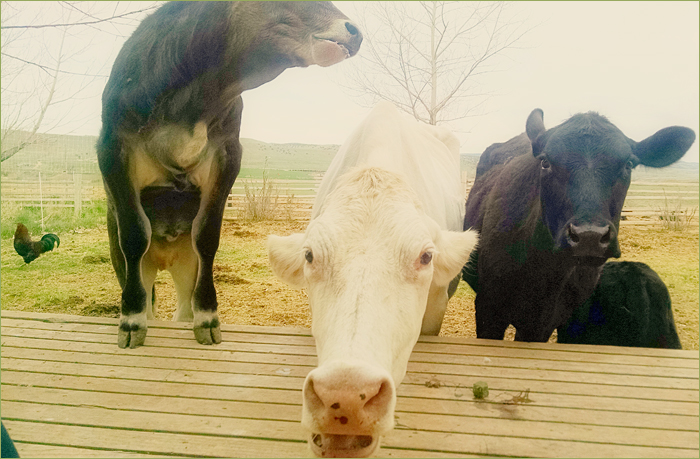
A Black Baldy And A Book
☆ April 10, 2018
When a black Angus cow has a white face, she’s called a black baldy.
And sometimes, her calves are baldies, too!
An important book: DEFENDING BEEF, written by vegetarian and environmental lawyer Nicolette Hahn Niman. This book is not a rah rah eat more meat echo chamber. It is a dense but easy-to-read powerhouse of a book filled with science and history, biology and ecology, and a smattering of politics to top it off. The section on soil is pure poetry… I mean it!
If you’re vegetarian or vegan and care about the environment, you should read this book. If you eat meat and care about the effects of your choices, you should read this book. Basically, anyone who eats food should read this book. Find it HERE or at your local library.
Dispatches From A Bovine Midwife
☆ April 3, 2018
Calving season has been intense this year and I’m either out midwifing cows or recovering from midwifing cows (I got rolled down a snowy hillside by a cow with PPD when I rescued her calf from her headbanging; it’s been a week since then, and all three of us are doing fine, and she is now a wonderful mother). So, I haven’t been on the computer much. I sent the following story to the Star Brand Beef newsletter group the day after the Spring Equinox and, since I don’t have a post prepared for this week, I’m sharing it here, too!
. . .
Last night, I said to Mike, “I feel like I got nothing accomplished today.” And he replied, “You saved a calf’s life, I’d say you had a pretty successful day.”
I’d spent most of my day squatting in the damp wind with binoculars, watching a heifer (first time mother) in labor. Sometimes, heifers need extra help, and sometimes, they ignore their calves at first. I knew the latter would not be an issue for Ixchel, the cow I was watching. She had been hovering around another cow’s calf while in the early stages of labor, licking it and mooing to it as if it were her own. She was ready to be a mother. But her labor was taking a long time, longer than usual, so I wanted to watch her closely without getting in her way.
Crouching in the dirt, not knowing if what I was facing was going to be beyond my level of expertise, my heart beat ever-more-nervously as Ixchel got closer to delivery. I had my cell phone tucked into the shaft of my muck boot in case I needed to call for backup. When the calf’s hooves emerged, I knew things were leaning in a positive direction because the calf was not breach. And I also realized why Ixchel’s labor had been more prolonged than usual – her water hadn’t broke, and her calf hadn’t burst through the amniotic sac. Her calf was being delivered while still inside the amniotic sac! In humans, this is called an “en caul” birth and is quite rare.
Once the calf’s front hooves were out (though still enclosed in the amniotic sac), Ixchel lay down and began pushing in a slow, steady rhythm. The moment the calf’s head and shoulders emerged, I dropped my binoculars in the dirt and sprinted over to Ixchel and tore open the amniotic sac with my hands. I cleared the membrane and fluid from around the calf’s nose and mouth just as Ixchel pushed again and the calf’s rib cage emerged – when this happens, the baby is compelled to take its first breath. And if this calf had done so while still enclosed in the amniotic sac, she would have suffocated or drowned. But happily, she took a big breath of air and, with one last push from Ixchel, slithered out, wide eyed and perky. Birth is so wild.
Ixchel immediately got up and mooed a lullaby to her new baby and began licking her off, licking and licking and mooing and mooing. I got no paperwork or office work done, but I got to spend the day where it mattered.
. . .
PS: For a full-circle experience, you can read the story of Fiona giving birth to Ixchel HERE.
PPS: You can sign up for the Star Brand Beef newsletter HERE.
Winter Milking
☆ March 27, 2018
Yesterday, we woke up to four inches of snow and a sky full of flakes, more inches piling up by the hour, and it was beautiful, of course, but incredibly disheartening because this has been a hard winter and I had allowed myself to believe that we were done with the snow and done with the mud (it had finally dried out!), but no. We’re back in winter for a while. And while this winter has been so hard, one thing I’ve loved, deeply and unexpectedly, is winter milking.
Milking, for me, is like exercise is for many – one of those things that you never look forward to and only make yourself do because you have to, but then, when you’re in it, when you’re doing it, you’re filled with so much joy and happiness it seems impossible not to look forward to doing it again the next day. Often, when I’m milking Daisy, I think to myself, “wouldn’t it be wonderful to just quit everything and become a milkmaid?” These romantic daydreams last as long as the milking session and vanish when I’m done, replaced, in the space between milkings, by another thought: “omg, I am so sick of milking.”
Milking is a chore, a chore that extends beyond the actual act of milking – there is the washing of the milk pails and cups and glass gallon jars every single day. There is the cow wrangling and the udder washing and the post-milking thank you brushing of the cow. There is the toting of the the brush and washcloths and warm soapy water and hay and halter and treats and milk pail and cup to the milking area and the lugging of it all back to the house when done (but for the hay and treats). In winter, there is the ritual of layering up – layer after layer after layer to ensure warmth while sitting in the snow for nearly an hour. And there is the task of making sure the cow is peaceful and happy or distracted and entertained, and, even if she is none of those things on any given day, that she at least stands still.
In the past, this last part has been the most challenging part of milking for me. Daisy loves her babies and is so devoted to them, in previous years she has treated me as a kind of milk thief. The best word to describe her attitude towards my milking was begrudging. Or rather, on the best days, she was begrudging, and on the worst days, she was mean. She’d try to kick me, or she’d tap dance for an hour, making the act of milking as difficult as possible for me, or she’d hold back her milk. Cows can do that! They can refuse to let down their milk and will save it for their calves, even though dairy cows produce far, far more milk than any single calf could ever need. When Daisy would pull this trick, I’d have to bring her baby alongside me, give it a teat, and then race the calf, milking as quickly as I could so the calf wouldn’t drain the teat it had been given, then steal my teats, leaving me to trudge home with a measly cup or two of milk.
This year has been different. It’s been so remarkably different, I wonder if, after her miscarriage and before we got Mara, Daisy accepted me as her baby and now I’m equally as entitled to milk as her bovine baby. She’s treating me as if this is so. This year, she has not tap danced while I’ve milked, not once. She stands perfectly still and eats or meditates while I milk, just as she does when nursing a calf. Sometimes, she falls asleep. With Daisy so calm and peaceful, I sit at her feet and rest my head and shoulders against her warm belly while I milk. Rocked gently by her breath, there are times I almost fall asleep, too.
If Daisy wants to shift the position of her hind legs, particularly the leg I’m sitting next to, she no longer uses this as an excuse to whack me as she’s done in years past. Instead, she will raise her leg, draw her hoof up and in towards the center of her body, slowly move it forward in a semicircular arc, and then set it down on the ground again. With this maneuver, she is actively avoiding disturbing me or my milking. She is making sure she does not kick me as she shifts her feet. She is being so considerate! And she hasn’t held back her milk. It flows freely into my pail. I am blessed.
All of this means milking has been incredibly peaceful and meditative for me, even in the depths of winter. I don’t really notice I’m sitting in the snow, not while I’m warmed by Daisy and watching the colors of the sky as the sun rises or sets, and listening to the birds return as the weeks pass, and looking up at Daisy’s sweet face, her eyes half shut, her posture relaxed, chewing her cud. It’s been a chance to bond more profoundly with Daisy each day. Sometimes I break from milking and lean against her and sip her warm milk from a cup, frothy and rich. When I was a teenager and worked an espresso stand and had maxed out on coffee, I’d make myself almond steamed milk – warm and frothy whole milk with a shot of almond syrup mixed in. This is what Daisy’s milk tastes like, milked into a mug and enjoyed immediately.
And when I’m done milking, Daisy grooms me. She turns to me, and with a gentle toss of her head, begins covering me in long, deliberate swipes of her tongue. I only let her groom my clothes because cow tongues are rough and will take a layer of skin off with one lick. Sometimes, I misjudge the length of her tongue and she’ll nick my cheek or wrist with her spiny taste buds and I’ll flinch in pain, but it’s worth it, to be so loved by Daisy.
Signs Of Spring
☆ March 13, 2018
1) On Wednesday morning, for the first time this year, I heard Sandhill cranes talking to each other in the distance. That evening, as Mike and I drove home from a rare dinner out, we saw three dancing in our neighbor’s field. Then, on Saturday, they showed up here! They soar over me while I milk Daisy and strut around our pond, negotiating territory with the geese that moved in when the ice melted.
2) Charlie is singing again. Last week, after some shift in daylight or temperature or perhaps celebrating the return of the Sandhill cranes, Charlie began howling again. He’s been singing to us every evening, and some mornings, too. As I mentioned in the book, Charlie stops howling in the winter, except on the rarest occasions. His return to song is celebrated around here!
3) Mud. Mud always comes before grass.
4) Babies! Yesterday morning, I watched a heifer (first time mom) have a smooth and perfect delivery in the morning sun. She licked off her baby and her baby wobbled to her feet and had her first meal and they lounged together in the sunshine and hay the rest of the day.
5) I found myself delighting in a novel sensation. I was outside, and I was warm! Not sweaty-hot-that’s-about-to-refreeze-you from ten layers of clothes and the cardio of chores, but a deep, permeating, comforting, comfortable warmth. Spring is arriving.
